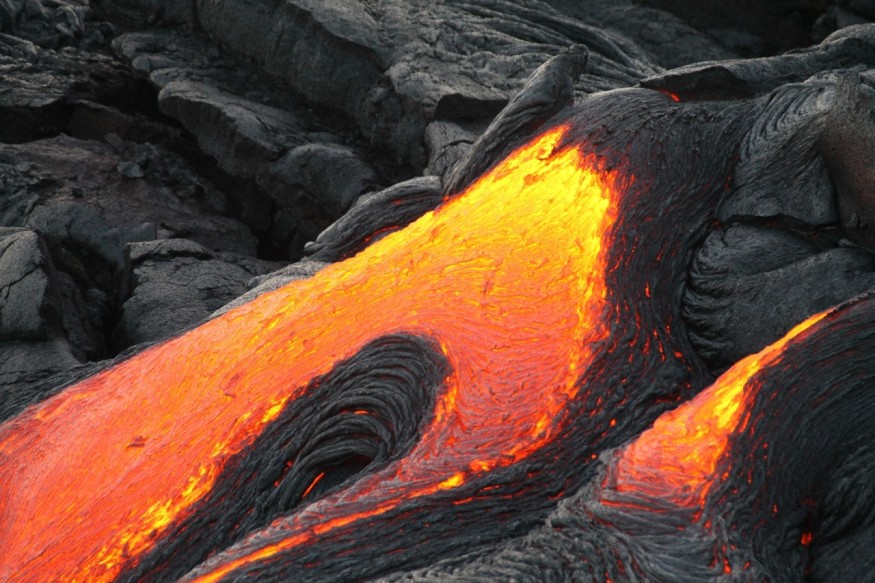Earth experienced many changes throughout its evolutionary history. Since its formation 4.5 billion years ago, our planet has been terraforming on a massive scale. Alongside its structural development, Earth is known to have a cooling process that could be measured through specialized devices.
Earth's Interior is Cooling for the Past 4.5 Billion Years

When Earth materialized, it had an immense temperature so hot that it made the whole planet look like a boiling orb. Earth had deep oceans made from magma throughout its earliest age, making any organisms impossible to live on its surface. As millions of years passed by, our planet cooled down significantly, forming a brittle crust where we stand today.
But despite the cooling of the outer parts of the planet, Earth's interior is still holding an intense amount of pressure and heat known to set its dynamic activities, including mantle convection, motion, volcanism, and gradual movements of plate tectonics.
It is established in the planetary studies that Earth has cooled down through ages. But the progress of decreasing temperature in the planet and its endpoint remains unsolved. Previous studies have focused on one factor that drives the ability of Earth to maintain its heat and cooling balance.
Experts believe that the theories on how to predict the timescale and halting of the cooling stages of Earth rely on the thermal conductivity, which is present in the boundaries of Earth's layers, specifically in between the mantle and core.
The specified boundaries contain several viscous rocks, which allows that mantle to be in direct contact with the extremely hot nickel and iron composition of the outer core. The temperature in between the two layers is steep, which may allow some exchange of heat spill from each of the layers. Alongside the main minerals of both the layers, a unique material known as bridgmanite is formed exclusively on the boundaries.
Thermal Conductivity of Bridgmanite Between Mantle and Core Reveals a Faster Cooling Than Expected
Bridgmanite was identified to regulate the heat flow across the mantle and core, but the thermal measure during the process is not yet recorded by the scientific community due to its remote location inside the depths of the planet.
With that said, experts from the Carnegie Institution for Science conducted research to develop a new approach to measure the thermal conductivity of bridgmanite's hidden below the mantle. With the new system, scientists will know the temperature and pressure of a certain region, as well as predict how the heat flows around the layer. The system is built with specialized materials, including a diamond unit head with a pulsed laser embedded inside an optical absorption measurement.
ETH Zürich's Earth and science expert Motohiko Murakami, who led the study, said in a EurekAlert report that the measurement system their team has developed has effectively gathered data from the bridgmanite's thermal conductivity with a chance of at least 1.5 times higher than expected.
According to the expert, what they found was the heat flow from the core to the mantle was higher than previously scaled. In addition, the greater flow that the core produces, the higher the mantle convection is observed. This process is also responsible for accelerating our planet's long-term cooling.
Murakami explained that a bit of intensity in the thermal conductivity between the mantle and core could cause plate tectonics to decelerate faster. In a closer look, the rapid cooling of the boundaries also causes the bridgmanite to transition on mineral post-perovskite. The product will eventually dominate the region and accelerate the temperature decrease.
In conclusion, the authors suggest that Earth's dynamics evolve similarly to other rocky planets such as Mars and Mercury, with the extreme cooling process eventually pushing Earth to become inactive in a much faster approach. The study was published in the journal Earth and Planetary Science Letters, titled "Radiative thermal conductivity of single-crystal bridgmanite at the core-mantle boundary with implications for thermal evolution of the Earth."
RELATED ARTICLE : President Berdymukhamedov Expressed Interest to Close the 'Gates of Hell' Due to Piling Economic, Public Health Issues in Turkmenistan
Check out more news and information on Geology in Science Times.












